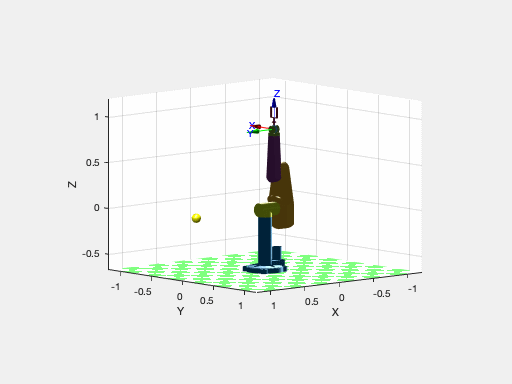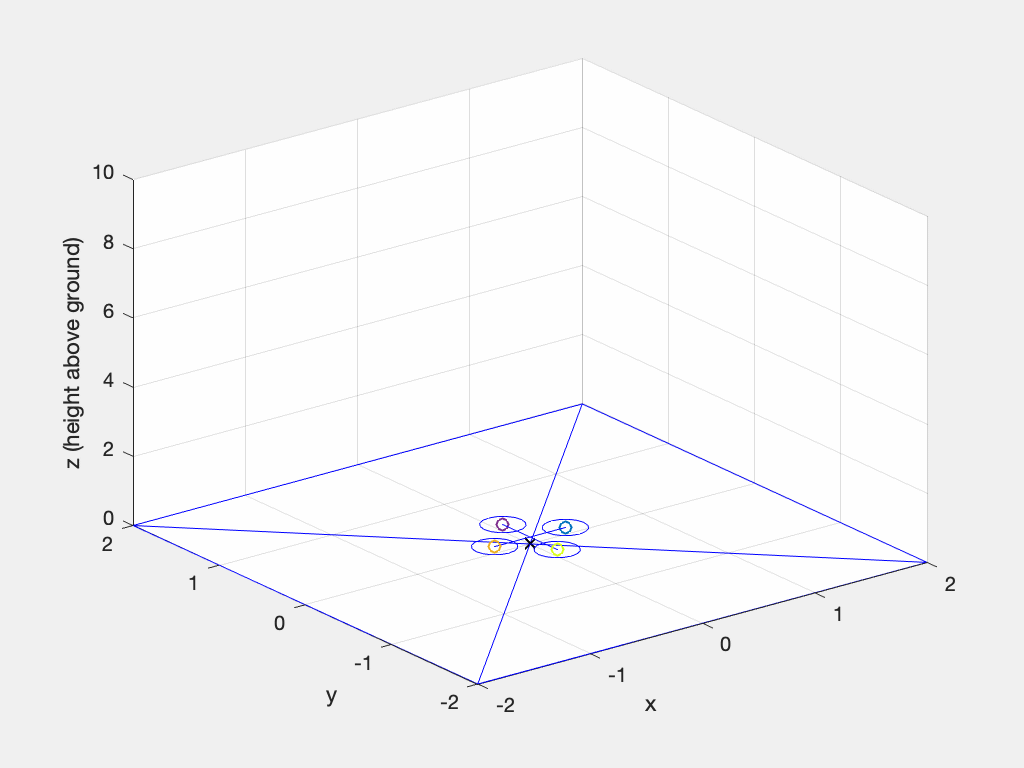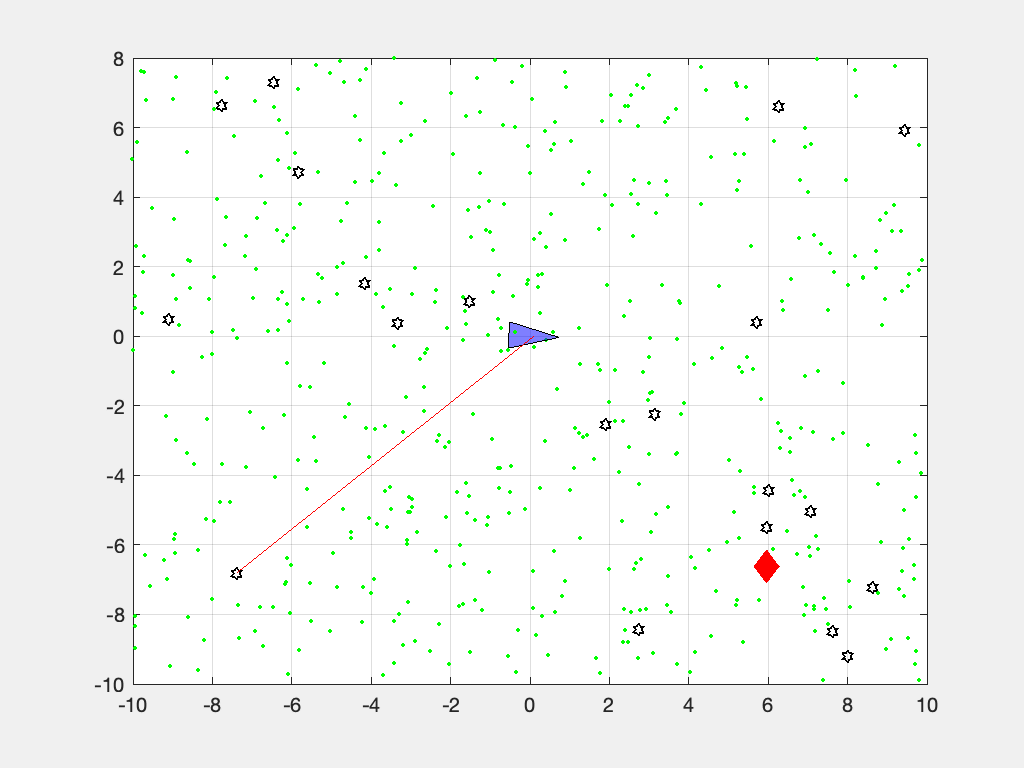This toolbox brings robotics specific functionality to MATLAB, exploiting the native capabilities of MATLAB (linear algebra, portability, graphics).
The Toolbox uses a very general method of representing the kinematics and dynamics of serial-link manipulators as MATLAB® objects – robot objects can be created by the user for any serial-link manipulator and a number of examples are provided for well known robots from Kinova, Universal Robotics, Rethink as well as classical robots such as the Puma 560 and the Stanford arm.
The toolbox also supports mobile robots with functions for robot motion models (unicycle, bicycle), path planning algorithms (bug, distance transform, D*, PRM), kinodynamic planning (lattice, RRT), localization (EKF, particle filter), map building (EKF) and simultaneous localization and mapping (EKF), and a Simulink model a of non-holonomic vehicle. The Toolbox also including a detailed Simulink model for a quadrotor flying robot.
Advantages of the Toolbox are that:
- the code is mature and provides a point of comparison for other implementations of the same algorithms;
- the routines are generally written in a straightforward manner which allows for easy understanding, perhaps at the expense of computational efficiency. If you feel strongly about computational efficiency then you can always rewrite the function to be more efficient, compile the M-file using the MATLAB compiler, or create a MEX version;
- since source code is available there is a benefit for understanding and teaching.
This Toolbox dates back to 1993 and significantly predates the Robotics Systems Toolbox® from MathWorks. The former is free, open and not supported, while the latter is a fully supported commercial product.
>> mdl_puma560
>> p560
p560 =
Puma 560 [Unimation]:: 6 axis, RRRRRR, stdDH, fastRNE
- viscous friction; params of 8/95;
+---+-----------+-----------+-----------+-----------+-----------+
| j | theta | d | a | alpha | offset |
+---+-----------+-----------+-----------+-----------+-----------+
| 1| q1| 0| 0| 1.5708| 0|
| 2| q2| 0| 0.4318| 0| 0|
| 3| q3| 0.15005| 0.0203| -1.5708| 0|
| 4| q4| 0.4318| 0| 1.5708| 0|
| 5| q5| 0| 0| -1.5708| 0|
| 6| q6| 0| 0| 0| 0|
+---+-----------+-----------+-----------+-----------+-----------+
>> p560.fkine([0 0 0 0 0 0]) % forward kinematics
ans =
1 0 0 0.4521
0 1 0 -0.15
0 0 1 0.4318
0 0 0 1We can animate a path
mdl_puma560
p = [0.8 0 0];
T = transl(p) * troty(pi/2);
qr(1) = -pi/2;
qqr = p560.ikine6s(T, 'ru');
qrt = jtraj(qr, qqr, 50);
plot_sphere(p, 0.05, 'y');
p560.plot3d(qrt, 'view', ae, 'movie', 'move2ball.gif');Mobile robot lifting off and hovering over a point following a circular trajectory, while also slowly turning.
>> sl_quadrotorMobile robot localizing from beacons using a particle filter.
V = diag([0.1, 1*pi/180].^2);
veh = Vehicle(V);
veh.add_driver( RandomPath(10) );
map = Map(20, 10);
W = diag([0.1, 1*pi/180].^2);
L = diag([0.1 0.1]);
Q = diag([0.1, 0.1, 1*pi/180]).^2;
pf = ParticleFilter(veh, sensor, Q, L, 1000, 'movie', 'pf.mp4');
pf.run(100);A fully commented version of this is provided in the LiveScript demos/particlefilt.mlx.
- Travis CI is now running on the code base
- All code related to pose representation has been split out into the Spatial Math Toolbox.
SerialLinkclass has atwistsmethod which returns a vector ofTwistobjects, one per joint. This supports the product of exponential formulation for forward kinematics and Jacobians.- a prototype URDF parser
You need to have a recent version of MATLAB, R2016b or later.
The Robotics Toolbox for MATLAB has dependency on two other GitHub repositories: spatial-math and toolbox-common-matlab.
To install the Toolbox on your computer from github follow these simple instructions.
From the shell:
mkdir rvctools
cd rvctools
git clone https://github.com/petercorke/robotics-toolbox-matlab.git robot
git clone https://github.com/petercorke/spatial-math.git smtb
git clone https://github.com/petercorke/toolbox-common-matlab.git common
make -C robotThe last command builds the MEX files and Java class files. Then, from within MATLAB
>> addpath rvctools/common % rvctools is the same folder as above
>> startup_rvcThe second line sets up the MATLAB path appropriately but it's only for the current session. You can either:
- Repeat this everytime you start MATLAB
- Add the MATLAB commands above to your
startup.mfile - Once you have run startup_rvc, run
pathtooland push theSavebutton, this will save the path settings for subsequent sessions.
Please email bug reports, comments or code contribtions to me at rvc@petercorke.com
Contributions welcome. There's a user forum at http://tiny.cc/rvcforum
This toolbox is released under GNU LGPL.





